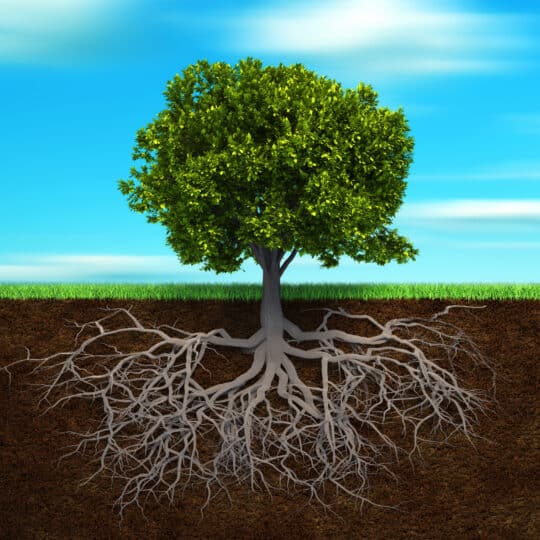Root Zone Invigoration
What it is & Why it’s Needed
Posted
May 16, 2024

When you think of tree care, what’s the first thing that comes to mind? The trunk? Branches? Leaves? Let’s start at the root of all plant health: the roots. Root zone invigoration is a set of practices designed to revitalize the intricate root system. Discover what’s involved and why it’s important for healthy plant growth.
Signs of Root Stress
The root zone—or the rhizosphere—is the area surrounding plant roots where soil, water, nutrients, and microorganisms interact. Improving the pathways and functionality of the root zone is essential for promoting vigorous growth and overall plant health. While you may not always see the roots of your plants, it will show you signs this zone may be in distress:
- Stunted growth
- Yellowing or wilting leaves
- Sparse foliage
- Sudden branch dieback
- Exposed roots
- Hard, dense soil
- Persistent weeds or pests
- Soil erosion
If you observe any of these signs around your tree, contact Elite Tree Care to help diagnose the underlying cause of stress and develop a tailored plan for root zone invigoration.
Root Zone Invigoration
Typically this process involves a combination of techniques designed to optimize soil structure, moisture retention, and microbial activity. Some common options include:
- Soil amendment. Add organic matter such as compost or manure to the soil to improve structure, increase nutrients, and enhance water retention. Organic amendments also stimulate microbial activity, promoting beneficial interactions between roots and soil organisms.
- Mulch. Help regulate soil temperature, conserve moisture, suppress weeds, and prevent erosion with a few inches of organic mulch, such as straw, wood chips, or shredded leaves. As it gradually breaks down, it enriches the soil with nutrients and organic matter.
- Aerate. Compacted soils restricts root growth and reduces oxygen flow. Break up the soil area around the tree to help alleviate compaction, improve soil porosity, and enhance root penetration.
- Proper watering. There’s such a thing as over and underwatering. The right irrigation practices are crucial for maintaining optimal soil moisture levels in the root zone. Overwatering drowns the soil and leads to root rot, while underwatering stresses plants and inhibit root growth.
- Proper nutrition. Test and balance soil nutrient levels to support healthy root development and overall plant growth. Soil testing can identify nutrient deficiencies or imbalances, allowing for targeted fertilization with organic or synthetic fertilizers to meet plant requirements.
- Root pruning and girdling. Pruning roots encourages the development of new, healthy root growth and can be particularly beneficial for container-grown plants or trees.
By understanding the signs of a stressed plant and invigorating the root zone, you can help create an optimal environment for growth and function, leading to healthier, more resilient plants with improved vigor, productivity, and stress tolerance.